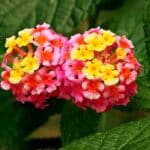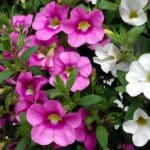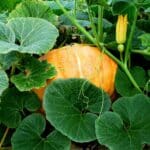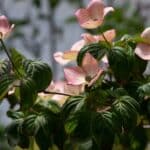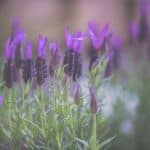Growing up, there was a good chance you had a crabapple tree somewhere near your home – at least, if you lived in a temperate area of the Northern Hemisphere, that is.
The word “crabapple” refers to a genus of more than 50 species of small shrubs and deciduous trees in the Rosaceae family, including regular culinary and eating apples along with wild apples, too.
However, there are a few species of crab apples that are particularly well-suited to being grown as bonsai specimens. Not only do these plants put on gorgeous foliage that will make you want to stop and pay attention, but they can easily be trained to take on a unique form in your container, too.
If you want to grow crab apple bonsai trees, this guide will tell you everything you need to know.
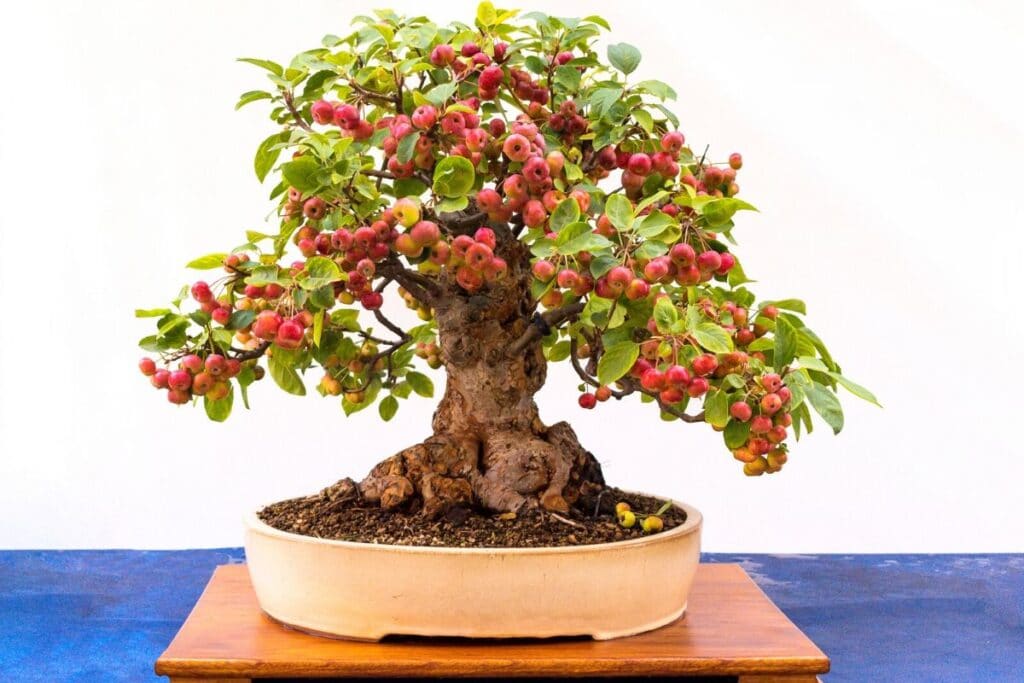
Interesting Facts about Crabapple Bonsai
Height: 6-10 inches (mature bonsai)
Width: 2-3 inches
Sunlight: Full sunlight
Flowering Time Length: Mid spring to late spring
Lifespan: 40 years
Scientific name: Malus
Types of Crabapple Bonsai
There are countless crabapple species you can grow. After all, no two apple trees are alike – so neither are two crabapple trees!
Some of the most popular crabapple types for bonsai include Malus halliana, Malus x zumi, Malus toringo, Malus sylvestris, Malus baccata, Malus cerasifera, and Malus floribunda.
Because of the abundance of pale pink and red blooms in the spring, Malus halliana, also known as Hall’s crabapple, is a popular ornamental bonsai tree. In the fall, they produce brilliant yellow to dark golden fruit. The leaves are dark green in color and have rounded lobes at the tips.
M. s. ‘Tina’ is an outstanding variety with extremely dark pink buds that open to pure white flowers at the same time for a spectacular show of color in the spring.
The list doesn’t end there, though – you can use just about any kind of regular crabapple tree for bonsai.
Growing Crabapple Bonsai from Seed or By Propagation
You can grow these bonsai fruit trees from seed or by propagation. You may use cuttings as well as air-layering to accomplish this task.
Growing from rooted cuttings is the preferred method of propagation since it is easier and quicker.
How To Care for Crabapple Bonsai
You can take care of your crabapple bonsai tree using these tips.
Sunlight
Crabapple bonsai needs to be placed in a location that provides full sun and airflow. The best spot to place your bonsai tree is outdoors, if the weather permits.
This plant doesn’t like extreme heat or extreme cold, so avoid exposing it to those conditions. It’s a frost-hardy plant, but you do need to protect it from hard frosts, so bring it indoors when the temperatures dip.
Watering
Crab Apples need a lot of water during the growing season. It is very important that you don’t allow your tree to dry out. Your plant will need more water during sensitive times, such as when it is producing flowers or yellow fruit.
If you don’t supply your plant with sufficient amounts of water, it won’t hang on to its flowers or fruit (though fruits are rare on small bonsai plants anyway).
Try not to use water that is overly acidic, as apples prefer more alkaline or neutral water and soil.
Fertilizing
You can apply an organic fertilizer once a month to your plants. A liquid fertilizer can also be used, but more frequently – usually, once every three weeks.
Don’t use a nitrogen-rich fertilizer, as this can prevent blossoms as the plant will be encouraged to put on more foliage.
Potting and Repotting
You will need to repot your crabapple bonsai each year in the early spring. Once your plant is a few years old, you can get away with less frequent repotting (just once every two or three years should suffice).
Prune the roots when you repot and make sure you use a bonsai pot that is slightly larger than the original. It should contain a soil mix that retains water easily.
Although this flowering tree is cold-resilient, crabapple grows in bonsai containers that should be sheltered from harsh frosts.
Pruning a Crabapple Bonsai
You should prune your crabapple bonsai in the late fall after all of its leaves have fallen. This will provide the best window for you to identify new leaf buds and flower buds so you won’t accidentally prune away all of the necessary buds.
Trim back new shoots to one or two leaves during the growth season if they become too long and dense. After that, trees should be kept unpruned until late summer.
Pests and Diseases
This plant is prone to several pests and diseases, just like all other members of the apple family. It can be attacked by pests such as red spider mites, scales, aphids, mealybugs, and caterpillars. These are relatively easy to remove by hand when you spot them, but you can also keep them away with insecticides.
When it comes to disease, watch out for fungal problems like rust and mildew. Canker is another common problem. You can use a copper fungicide to prevent these issues, but often, it’s just easier to maintain good practices in terms of watering and airflow to keep your plants healthy.
Where to Buy Crab Apple Bonsai
You can purchase a crabapple bonsai from many online retailers. It’s often easier to purchase this plant from seed, although it can take a long time for them to get started.
However, since you can grow a crabapple bonsai from just about any cultivar of crabapple tree, you will have a variety of choices when it comes to finding the right fit for your bonsai collection.
FAQs
What is the folklore of crab apple tree?
In folklore, the crab apple tree is often associated with love, fertility, and protection. The tree’s blossoms symbolize love and its fruits are linked to fertility, while the tree itself is thought to have protective qualities, especially against negative energies.
What is the best crabapple tree for bonsai?
The “Malus halliana,” also known as the Hall’s Crabapple or Chinese Flowering Crabapple, is often favored for bonsai cultivation. Its small size, delicate leaves, and attractive pink flowers make it well-suited for bonsai aesthetics, and its adaptability to various pruning styles adds to its popularity among bonsai enthusiasts.
*Photo by Armacuatro/depositphotos

